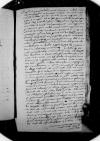List #2258
Ioannes DANTISCUS do [Sigmund von HERBERSTEIN]Heilsberg (Lidzbark Warmiński), 1540-02-23
Regest polski:
Dantyszek otrzymał 16 września list Herbersteina przywieziony przez Mikołaja Nipszyca. Prosi by Herberstein pozdrowił Wilhelma von Rogendorfa. Wyraża wątpliwość, czy budowany przez Rogendorfa dom typu hiszpańskiego przetrwa w niemieckim klimacie, albowiem gliniane ściany łatwo się zawalą narażone na zimowe chłody i podmyte deszczem, podobnie jak znana Herbersteinowi skała między Bolzano a Merano. Nie odpisał wówczas Herbersteinowi, ponieważ Nipszyc nagle wyjechał. Przesyła na ręce Nipszyca niniejszy list.
Rękopiśmienne podstawy źródłowe:
Publikacje:
| ||||||
Tekst + aparat krytyczny + komentarzZwykły tekstTekst + komentarzTekst + aparat krytyczny
Magnifice et Praestabilis Domine, amice a multis annis intime, carissime et honorande.
Salutem et omnem Magnificentiae Vestrae felicitatem precor ex animo.
Ex eo, inquam, animo, quem erga se semper ab eo tempore, quo in aula laudatissimi illius atque excellentissimi
Ceterum, quod Magnificentia Vestra necessitudinis et convinctionis nostrae et magnifici domini
Quod cum communi amico domino
Quam diutissime feliciter valere cupio summopere.
Ex castello meo
[1 ] Dantiscus is probably referring to the early period of his acquaintance with Herberstein at the court of
[2 ] One can guess that Dantiscus is referring to events of 1515-1516
[3 ]
